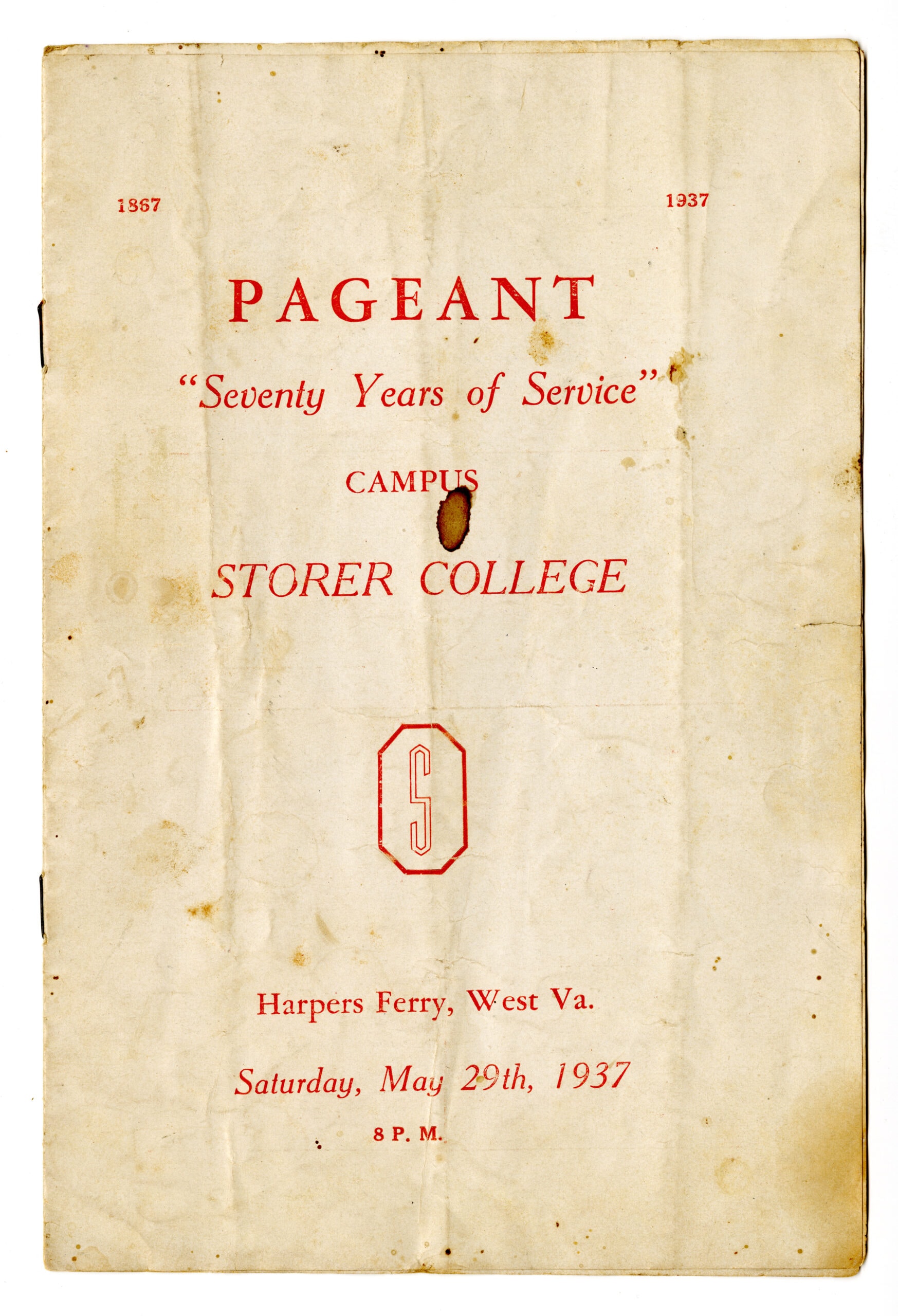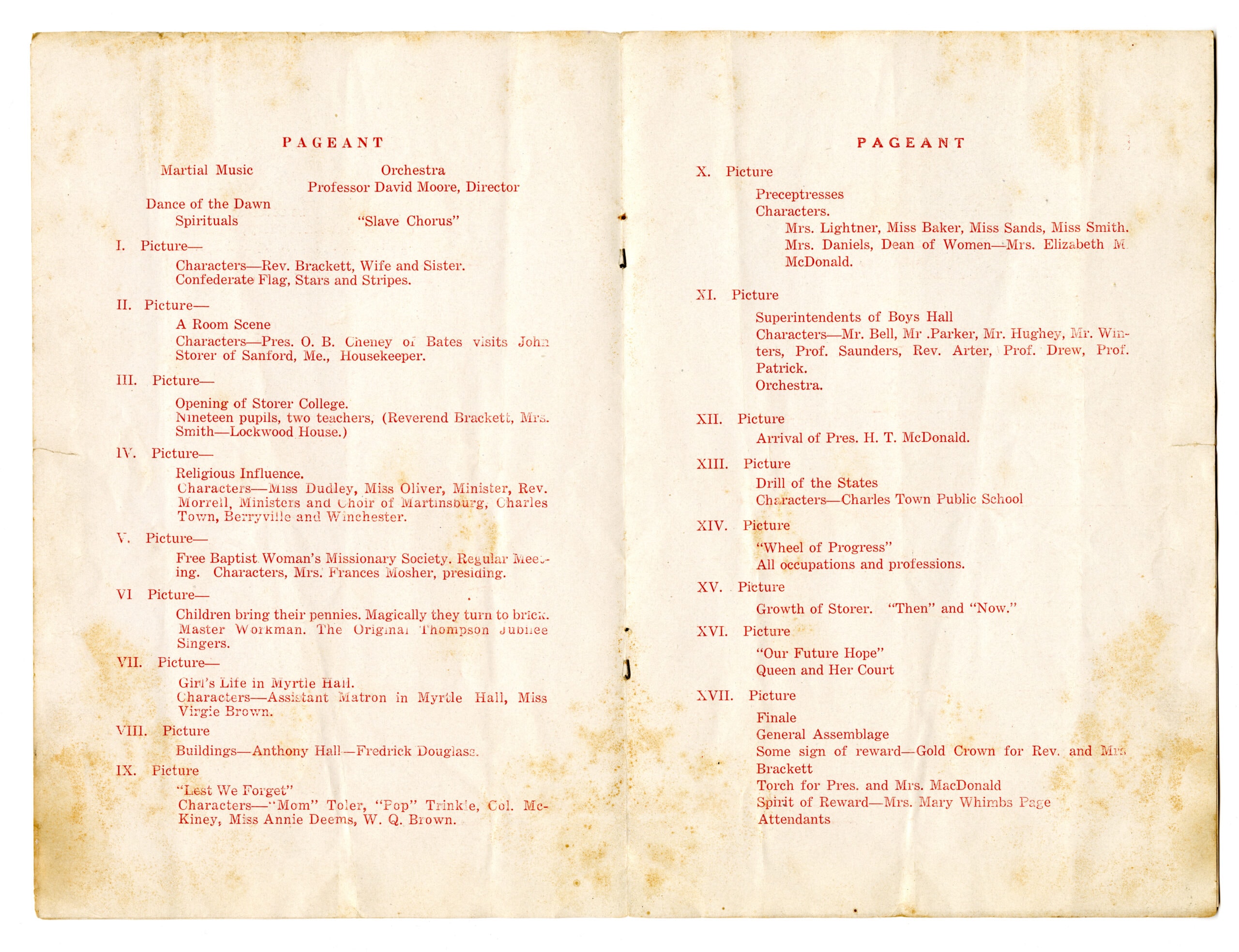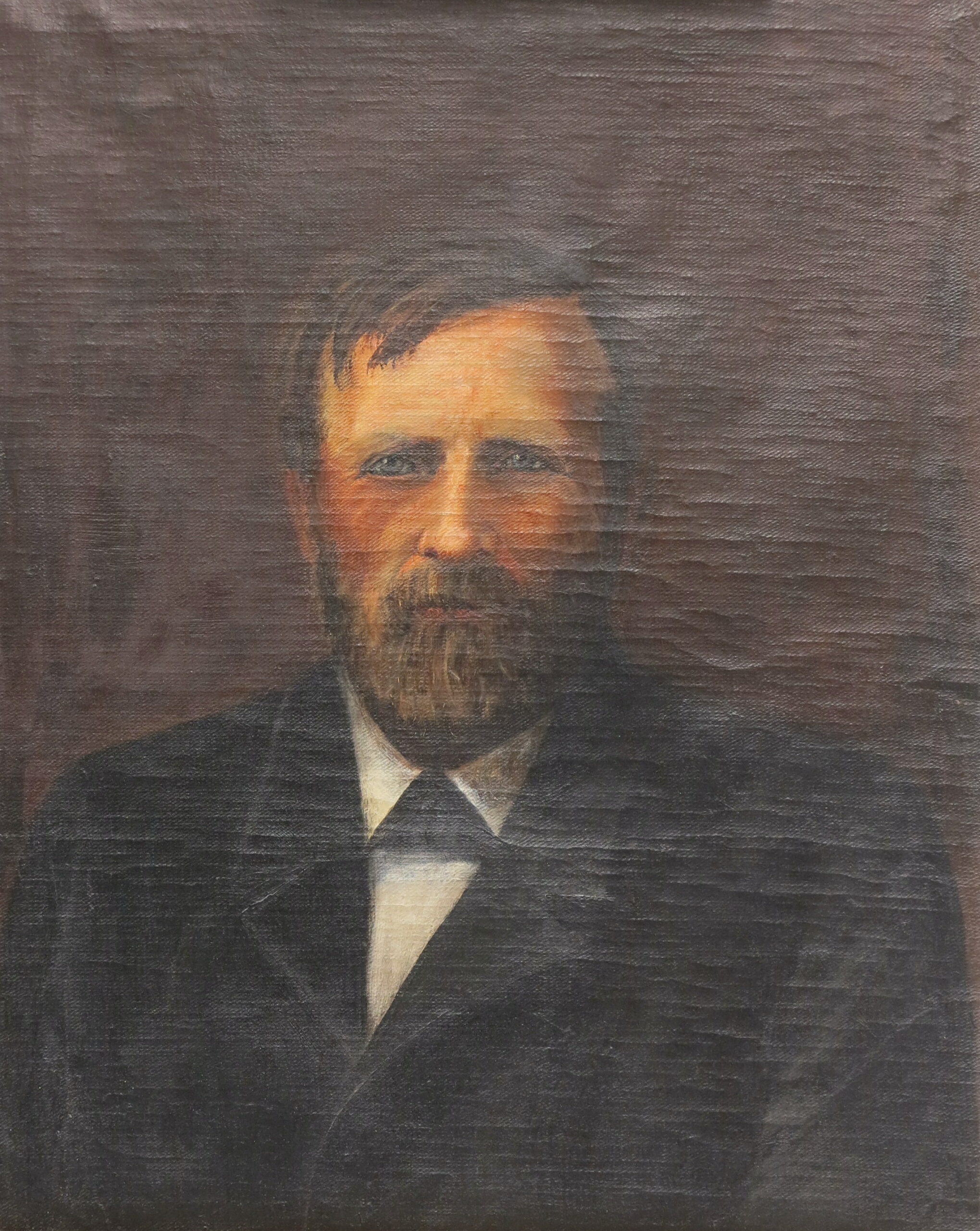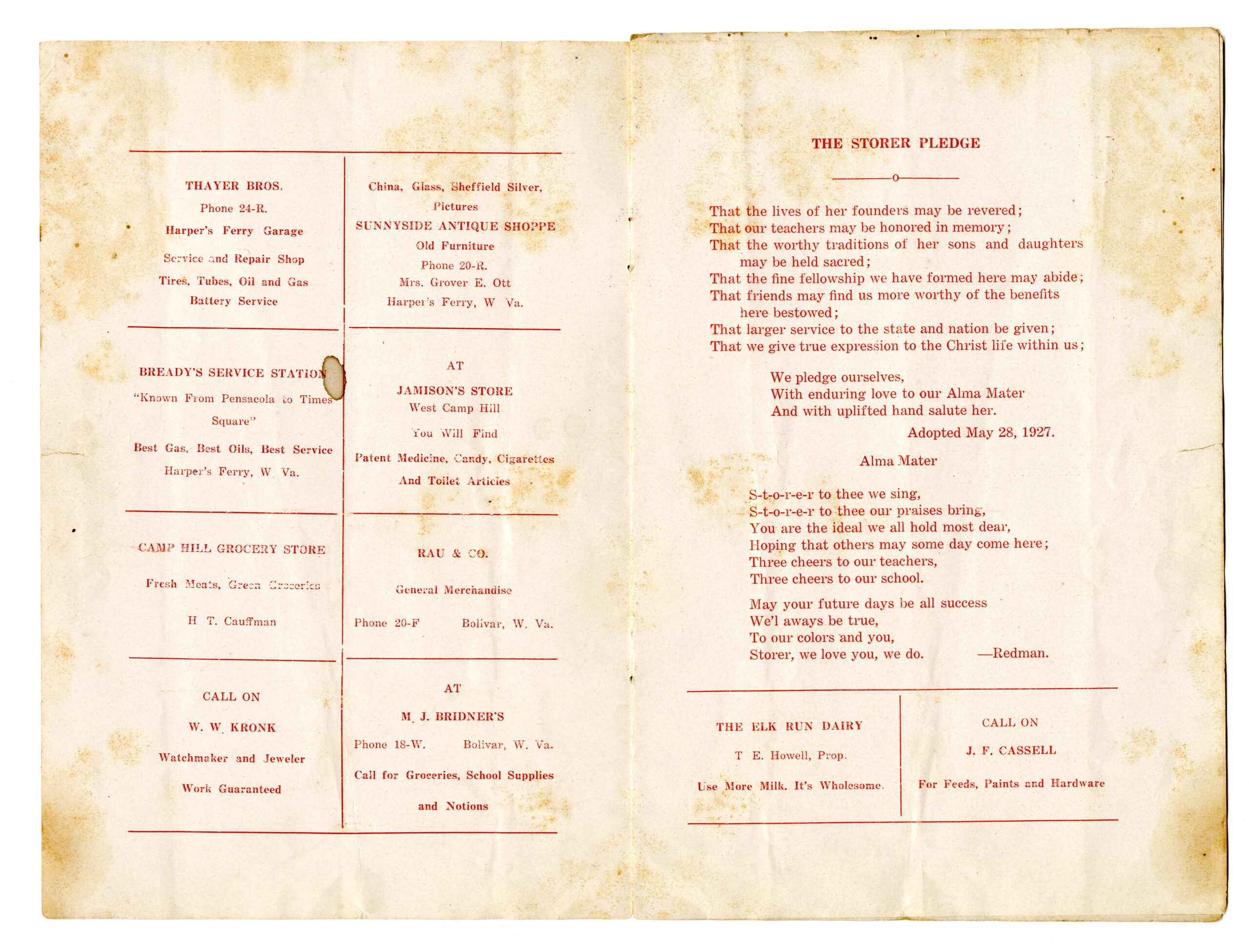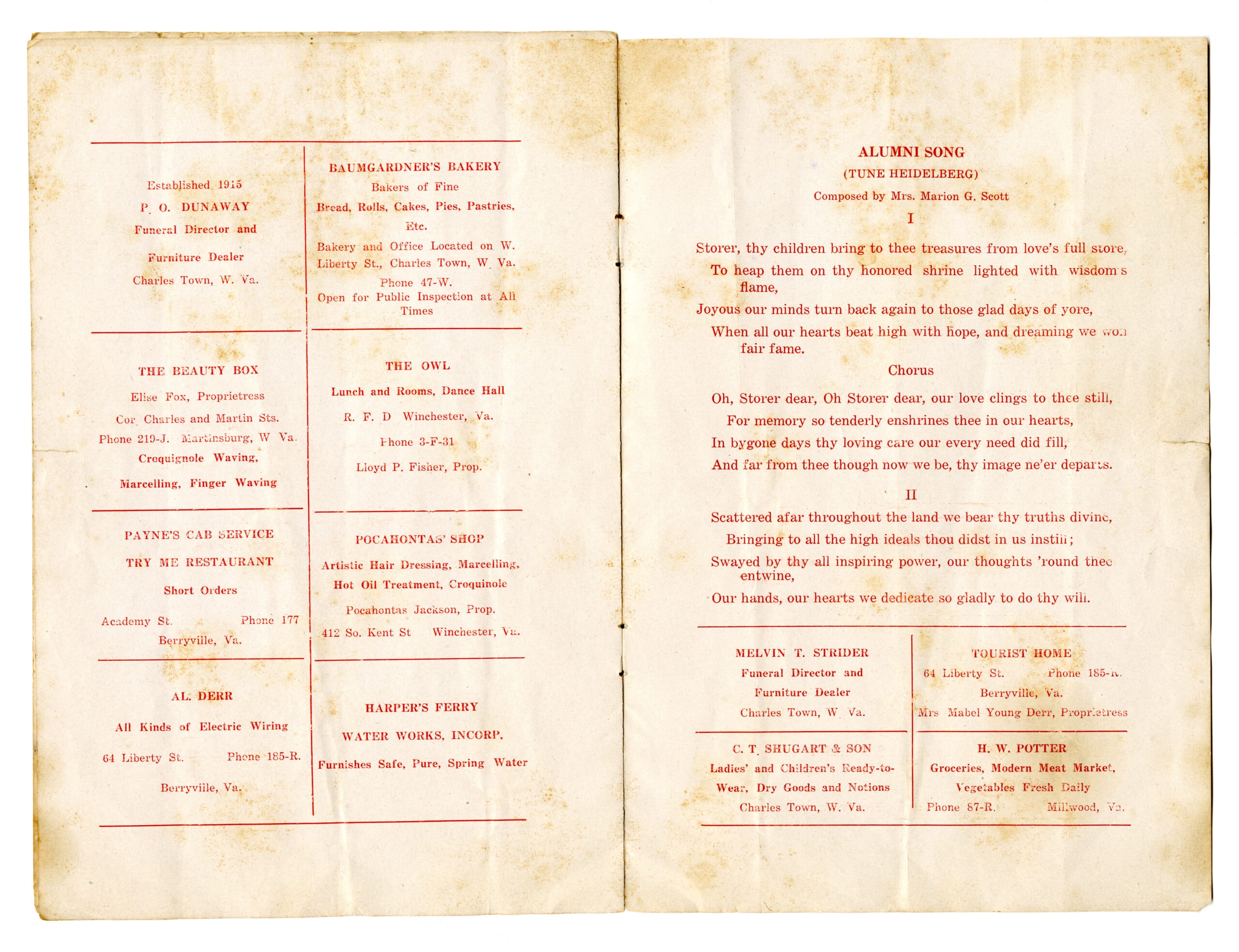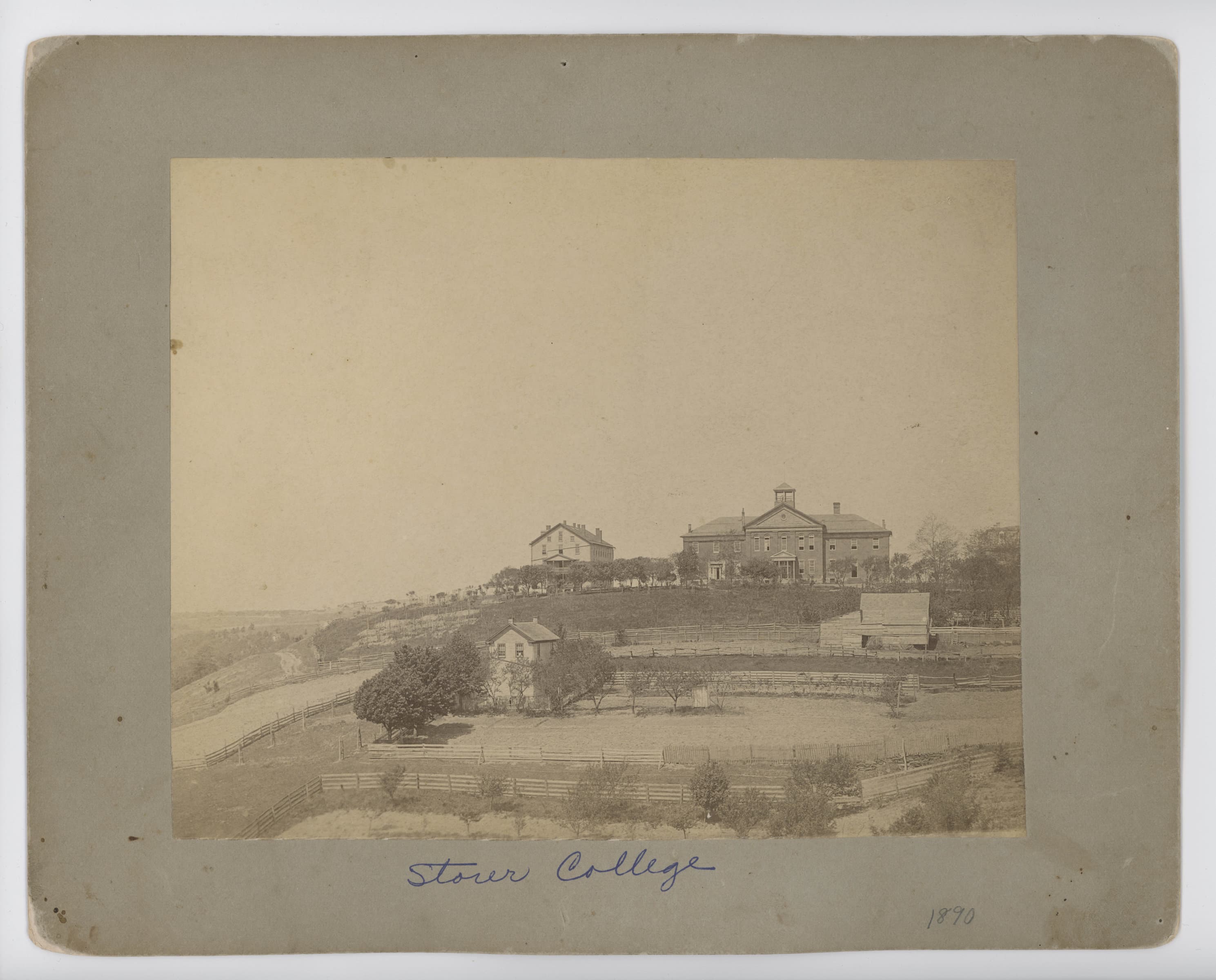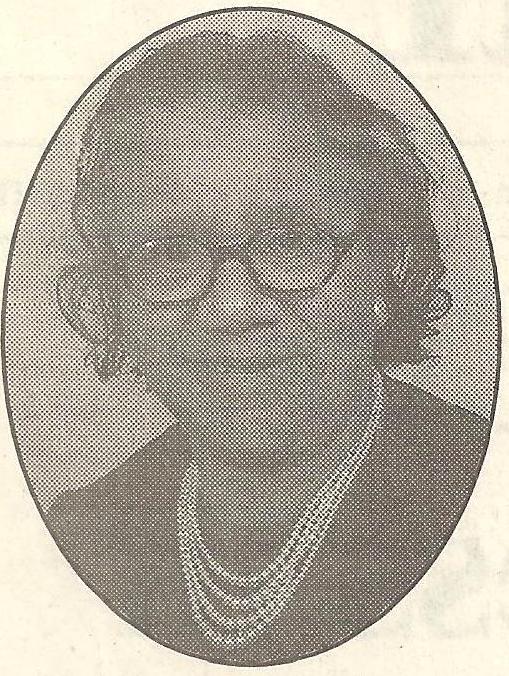Curator of Collections Nick Powers discusses Storer College in Harpers Ferry, WV and the ways in which its community reflected on its history decades after emancipation.
Over its nearly 90-year history as a beacon of Black education in the Valley, Storer College in Harpers Ferry and its community of students, faculty, and alumni celebrated numerous milestones and anniversaries. A recent gift to the MSV Collection—a program printed for the school’s 70th anniversary celebrations (Figure 1)—reveals the ways that the Storer community reflected on its history decades after emancipation.
On Saturday, March 29, 1937, the Storer community celebrated its platinum anniversary by staging a pageant examining “Seventy Years of Service” on its campus. As described in the program, the pageant comprised 17 “Pictures” (Figure 2)—scenes drawn from Storer’s history and portrayed by live actors similar to a tableau vivant. The pageant was entirely a Storer faculty and student-led production. Credited in the program for the musical score, for example, was Storer professor David Carter Moore.
The pageant’s opening scenes underscore Storer’s emergence from the aftermath of the Civil War, the terrible legacy of enslavement, and the hope of emancipation. (Described in more detail in other blogs on the MSV website, available here and here). These included the singing of Black spirituals, sacred music expressing “the highest joy and the deepest sadness” as Frederick Douglass described it.[i]
The next few scenes trace Storer’s evolution from a one-room school founded by New England missionaries Rev. Nathan Cook Brackett (1836–1910) (Figure 3) and Louise Wood Brackett (1842–1910) to a full campus with dedicated housing for both men and women and multipurpose academic buildings like Anthony Hall. Plans were probably already underway in 1937 for Storer to offer full four-year degrees, which went into effect in 1939.[ii] The pageant writers summed up this rapid growth in a more succinct (and ethereal) way: “Children bring their pennies. Magically they turn to brick.”
Later “pictures” in the program illustrate how philosophies of Black success may have been changing (at least at Storer) by the 1930s. Many of Storer’s early leadership figures embraced the social theories of African American activist W. E. B. Du Bois, who endorsed the cultivation of America’s Black intellectual elite as key to racial uplift. In 1906, Du Bois was instrumental in bringing the second meeting and the first on American soil of the Niagara Movement to the Storer campus. Among other organizations, the Niagara Movement was one of the forerunners to today’s NAACP.
Picture XIV in the pageant program might represent a shift away from Du Bois’s social theories in favor of those of his contemporary, Booker T. Washington. The description of a “Wheel of Progress” for “all occupations and professions” (Figure 4) possibly reflects Washington’s philosophy of promoting Black education and active citizenship to combat racism in the Jim Crow South. This was more important than ever by the 1930s. Among other obstacles, the previous decade witnessed the reemergence of the Klu Klux Klan in the southern United States, including in parts of the Shenandoah Valley surrounding Storer.
Other shifts revealed by the program booklet are more uplifting. Listed in front and back of the program are sponsors for the pageant. The majority of sponsors were businesses in Storer’s backyard of Harpers Ferry and Bolivar. But also listed are businesses as far away as Charles Town, Martinsburg, Winchester, Millwood, and Berryville—all areas that produced young scholars who furthered their education at Storer (Figures 5–6).[iii]
The sponsors represent a mix of Black- and-white-owned businesses, signaling an acceptance of Storer in the northern Valley that had not always been the case.[iv] Storer’s earliest teachers and student population—white and Black alike—faced slander in newspapers, verbal abuse, and the threat and reality of physical violence from locals in the immediate post-Civil War period. As Storer founder Nathan Brackett noted shortly after the school’s founding: “We are having serious trouble just now—or our pupils are. The bloodhounds are all loose. They have attacked our evening scholars several times lately. Last night four of the men fought their way through quite a crowd. They are threatening to burn our house.”[v] But by 1937, circumstances in Harpers Ferry had changed significantly. Storer—with its imposing stone and brick campus buildings emphasizing permanence and vibrant campus life—was there to stay (Figure 7).
This particular copy of the pageant program was owned by a graduate who took her education from Storer and paid it forward. The daughter of Charles Tokes and Cora Washington Tokes of Winchester, Sarah “Hester” Tokes Harris (1908–2001) (Fig. 8) was probably either a student or recent alumna of Storer when she attended the pageant in 1937. In addition to her time at Storer, Harris furthered her education at Virginia Union University in Richmond. She taught for a total of 50 years in Front Royal in the Warren County school system, in the Clarke County school system, and at Douglas School in Winchester before retiring from teaching in 1973. She died in Winchester in 2001 at the age of 93. Mrs. Harris—like so many other distinguished alumni who passed through Storer’s gates—embodied the values of hard work, determination, and self-improvement that defined life at the school.
Mrs. Harris’s copy of the 70th anniversary program—a gift from her children in her memory—is currently on view in the exhibition Contributions: African Americans in the Shenandoah Valley in the second-floor galleries at the MSV.
[i]Frederick Douglass, Narrative of the Life of Frederick Douglass (Boston, MA: Published at the Anti-Slavery Office, 1845), 13.
[ii]Dawne Raines Burke, An American Phoenix: A History of Storer College from Slavery to Desegregation, 1865–1955 (Morgantown, WV: West Virginia University Press, 2015), 118–119.
[iii]For insight into how Storer College made education accessible to African Americans in the Winchester area, see Judy Humbert and June Gaskins-Davis, History of Douglas School Winchester, Virginia: A Tribute to Endurance, Belief, Perseverance, and Success (Winchester, VA: Winchester-Frederick County Historical Society, 2014).
[iv]In addition to being a useful “checklist” of Storer’s broader support network, this sponsor list is also helpful in identifying Black-owned business in the northern Shenandoah Valley during the Great Depression.
[v]As quoted in David Fox, “The Labor of a Free Man,” in “To Emancipate the Mind and Soul”: Storer College 1867–1955, edited by Catherine Baldau (Harpers Ferry, WV: Harpers Ferry Park Association, 2017), 30.
